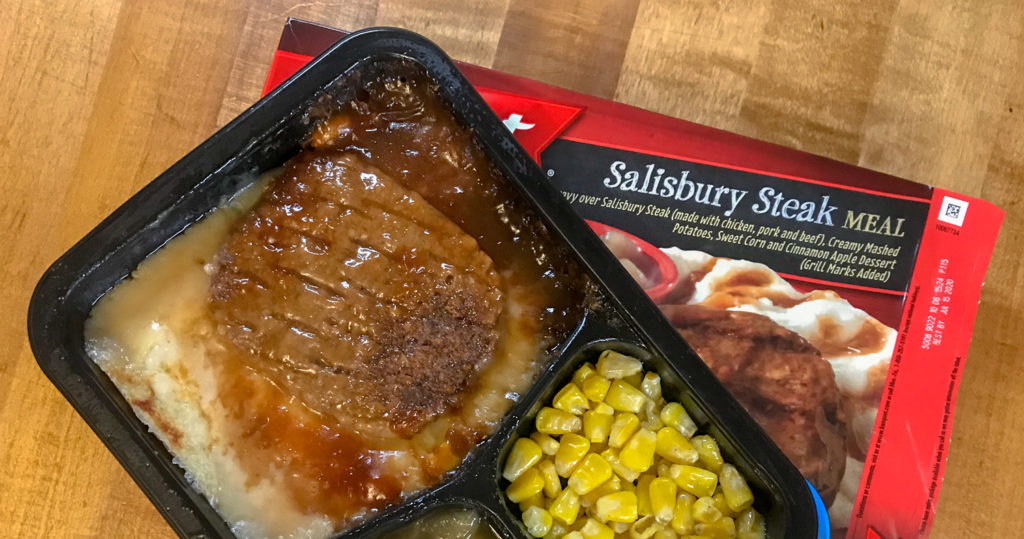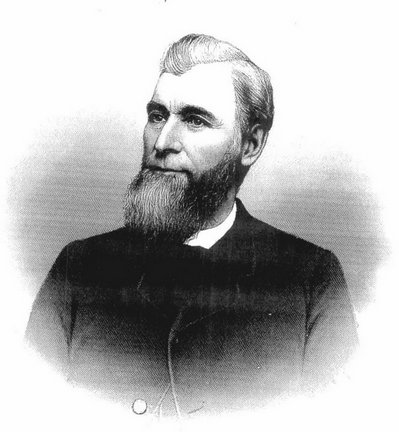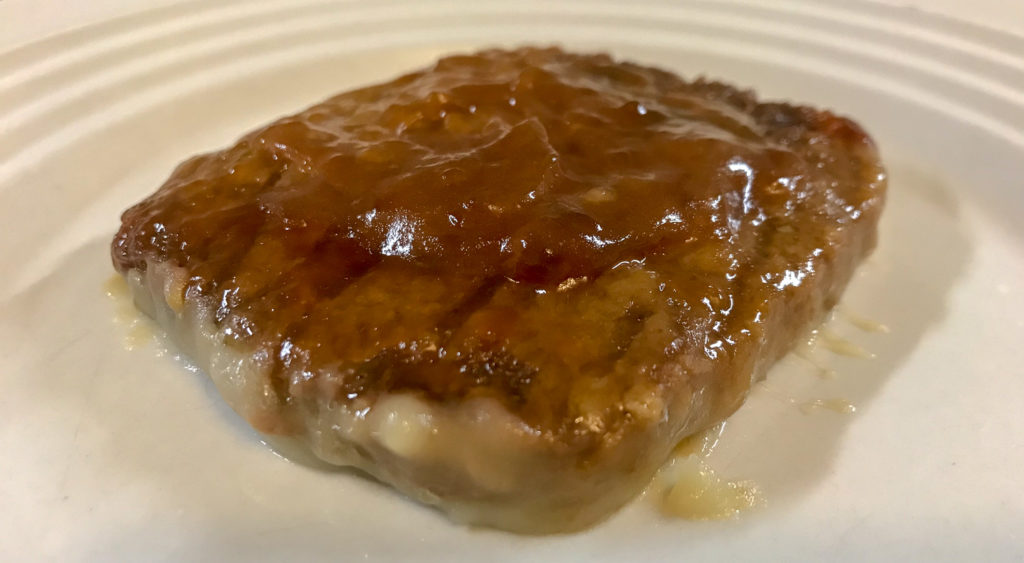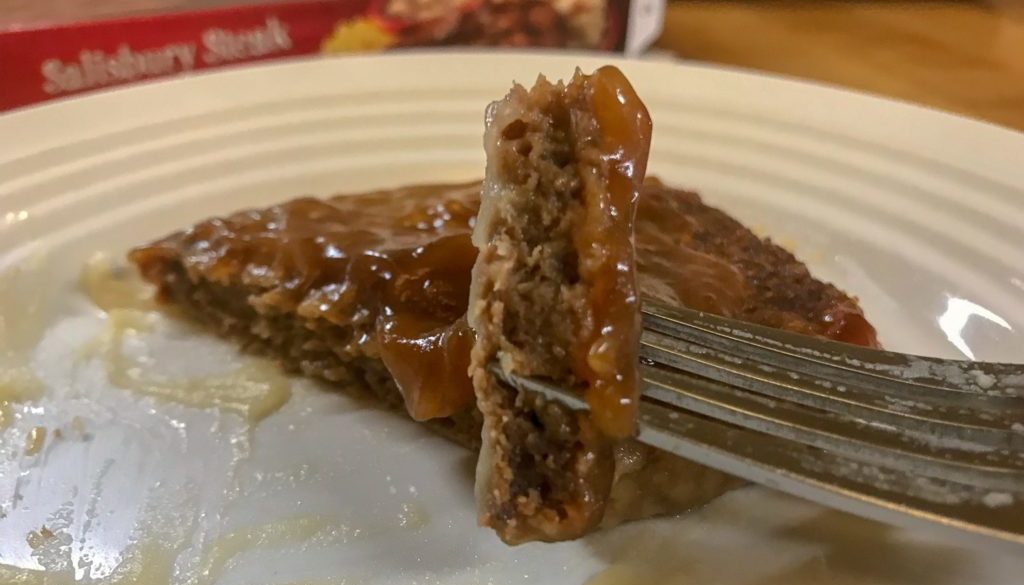The History of Salisbury Steak and Central New York
by Chris Clemens
My first introduction to a Salisbury Steak was one of those plastic compartmentalized frozen meals fit for a Hungry Man. Except, the formed mystery meat patty always gave me mixed feelings. There was the fact that the Salisbury Steak itself was slathered in savory brown gravy and did actually taste great.
But, then there was the fact that I technically had no idea what it was. Even as a kid, I had a sneaking suspicion that no one else did, either. At that age it’s easy to let things go.
It wasn’t until adulthood that I thought to look into the Salisbury Steak history. Low and behold, the star of any 1970’s TV dinner can be traced right back to our own backyard in Upstate New York.
To make the story even more interesting, it’s considered by some to be the first “fad diet”. Never mind that you don’t know what ingredients go into a Salisbury Steak. Just remember that in 1870, it was not only considered health food, but food that could actually heal you.
And, it’s origins are right here in Upstate!!

James Salisbury
If you’ve ever wondered how that deliciously puzzling patty was named, it was for the guy who first created it. James Henry Salisbury is from the Central New York region and was born in Scott, New York in Cortland County on January 12, 1823.
Later in 1844, Salisbury earned a degree in Natural Sciences from the Rensselaer Polytechnic Institute in Troy. Then, he got a medical degree from Albany College in 1850, and a Master’s from Schenectady College two years later. His entire upbringing and education took place right here in Upstate.

Salisbury was a smart guy, and a celebrated mind in his field. He worked for the New York Geological Survey for years, and was promoted high up in the organization. Then, he went to war in 1861. He served as a physician for the Union Army during the Civil War.
It was during this run of his career, that he honed his theories on all the wonderful health benefits of food.
What Goes In, Must Come Out
During the Civil War, it’s estimated that nearly 100,000 soldiers were killed not at the hand of their enemy, but by dysentery. If you’re not familiar, that’s a disease of the intestines that causes major diarrhea. As a doctor in the Civil War, Salisbury’s job was to figure out a way to keep people from getting sick, and how to heal them when they did.
In his 1888 tome The Relation of Alimentation and Disease, Salisbury wrote:
“Healthy alimentation, or feeding upon such foods as the system can well digest and assimilate, is always promotive of good health. Unhealthy alimentation always acts as a cause of disease.
So if you have major stomach issues, it stands to reason that you’ve been eating the wrong stuff. Salisbury concluded in his research that certain foods made us sick, and certain foods made us better. So, in Salisbury’s estimation, all those soldiers in the Civil War must have been eating the wrong foods.
A lot of his research was based on wartime experience, but he did a bunch of his own experiments, too. In fact, the preface of his book explains in detail how he decided to try living on only baked beans for three days. His experiment with the beans was five years before he even worked with Civil War soldiers. He shared:
I became very flatulent and constipated, head dizzy, ears ringing, limbs prickly, and was wholly unfitted for mental work. The microscopic examination of passages showed that the bean food did not digest.
But, instead of assuming that eating only a single food item for three straight days could be a problem, he decided baked beans in any amount were the culprit in his poor health.
Muscle Pulp Of Beef
Using that theory, Salisbury attempted to find what food was best suited for humans to consume. On page 30 of his book he writes:
“Consumption, strictly speaking, is a disease caused by abnormal or unhealthy feeding, or feeding too excessively on the various preparations of grains, vegetables, sweets and fruits, and the products developed from them by fermentation.
There’s a couple points in that segment to focus on.
First, he uses the word “abnormal”, which meant we were intended to eat certain things, and other things we just weren’t. Secondly, there’s no mention of meat being off limits in any amount.
Here’s where the “broiled cakes” containing “muscle pulp of beef” show up on the dinner table.

On page 208 of his book, Salisbury makes his case for why we need more meat in our stomachs if we’re going to be healthy.
The experiments upon meat feeding showed that meats, and especially beef and mutton, can be subsisted upon without resulting in diseased states, for a much longer time than can the best vegetable products under the same conditions. The reason of this is that the first organ of the digestive apparatus–the stomach–is a meat-digesting organ.
Salisbury lays out some pretty specific treatment plans and recipes in his book, but the major takeaway is the beef patty concoction. It’s the main focus of what he believed was the healthiest way to maintain (and heal) the human intestines.
Popularity
To get a patty of beef, you need to grind it up. Around the time he published his book, meat grinders were becoming more accessible for the average consumer. Salisbury specifically promoted a model known as the American Chopper.
More people having access to meat grinders in their home combined with the fact that a doctor was telling them a meat patty had health benefits meant the Salisbury Steak history was secure. Adding to the inventor’s authority, the U.S. Navy even included a recipe for it in their 1904 printing of their cookbook.


Oddly enough, 1904 was the same year that visitors to the St. Louis World’s Fair could try a brand new culinary invention called a “hamburger“. The origins of the ground-beef-patty-on-a-bun is hotly contested by historians, some of which claim it was also invented here in Upstate, in the Erie County town of Hamburg.
That’s a discussion saved for later.
Even though meat would soon be spun as Public Health Enemy #1, it’s popularity continued. Salisbury steaks aren’t nearly as popular as the hamburger, of course. But they’re still pretty awesome even if they don’t actually have healing powers.
And, we have a guy from Upstate to thank for that.

Chris Clemens is the Founder/Publisher of Exploring Upstate. From his hometown in Rochester, he spends as much time as possible connecting with the history, culture, and places that make Upstate New York a land of discovery. Follow him on Twitter at @cpclemens






December 10, 2022 @ 8:57 pm
But the all meat diet really does have healing powers. Just ask Mikaela Peterson, and the thousands of others who have healed or greatly mitigated a wide variety of inflammatory and autoimmune issues, such as fibromyalgia, IBS, chrones disease, rheumatoid arthritis, migraines, allergies, many skin conditions, and much more.
And more and more doctors are figuring this out (Ken Berry, Anthony Chaffee, Shawn Baker, etc).
Meat heals.
March 22, 2023 @ 1:02 pm
Very interesting article on Salisbury steak and the healing powers of meat. I’ll be making Salisbury Steak tonight for dinner. Yes, you are welcome to come try it at my house.